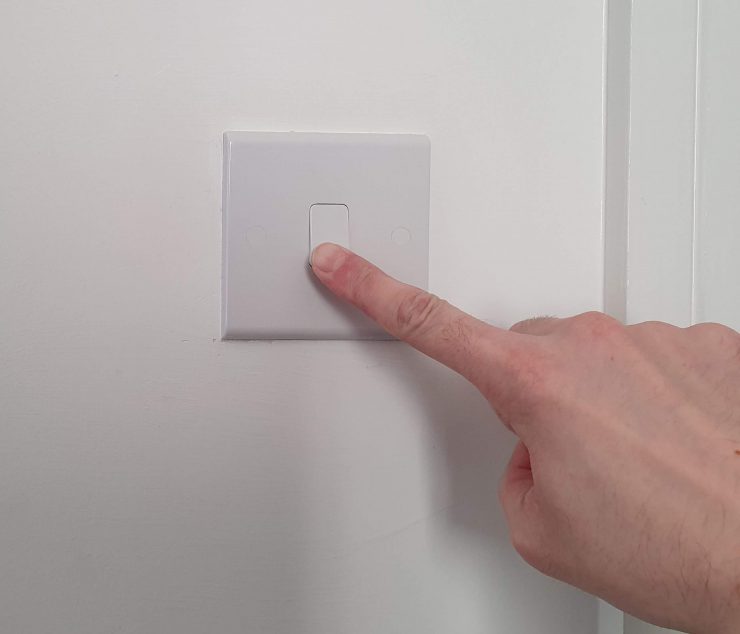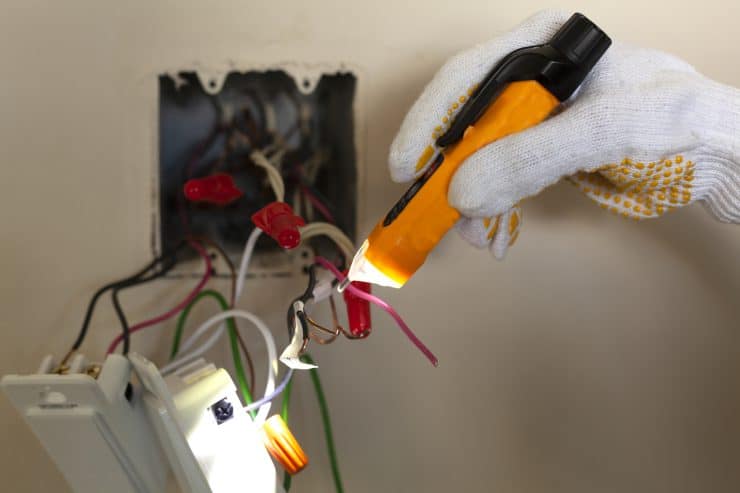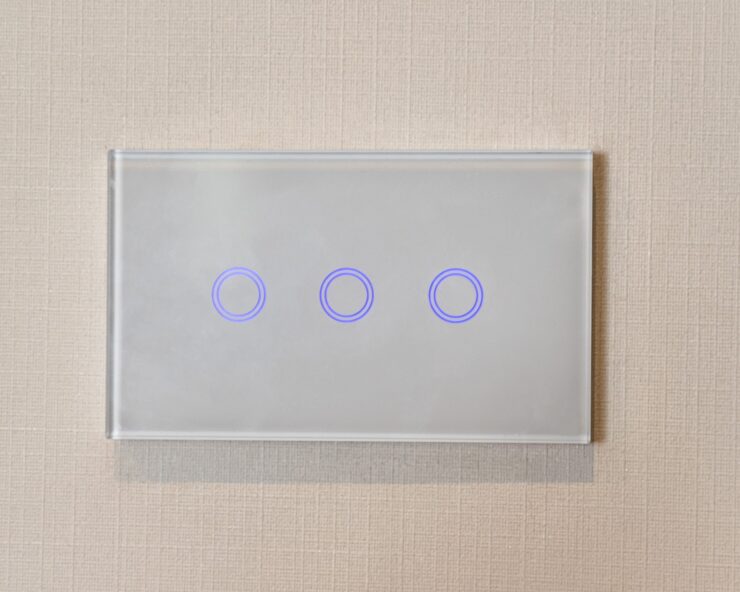There’s nothing more frustrating than wiring your first smart light switch only to find out that it’s making a constant clicking noise. What’s going on inside that switch? Well, a brief summary of the issue is:
Your Kasa Smart Switch is making a constant clicking noise because the neutral wire is not securely attached or there’s a defect inside of the light switch. You can fix this problem by shutting down the power to the switch at your breaker box and then making sure that the neutral wire was properly installed. If everything looks good and you’re still getting the clicking noise, it’s time to use the warranty or return a factory defect of Kasa Smart Switch.
Let’s fix this pesky clicking noise once and for all and make sure that your Kasa Smart Switch is safely installed in your wall.
A Quick Kasa Smart Switch Guide

Kasa Smart Switches are some of the best products offered by this brand (a brand backed by TP-Link). They’ve definitely made a reputation for themselves when it comes to changing an increasingly conventional smart device market.
Kasa makes an impressive range of WiFi-enabled smart switches. These include dimmer switches, motion activated switches, and switches with multiple positions as well as different functionalities. You can pair these with other smart devices in your home and hit the ground running thanks for them not needing a smart hub.
New switches may be easy to install and use, but people do complain about their making a weird clicking sound when you turn them on and off. Let’s explore what’s causing this sound and if it’s going to be a big problem for your smart switch experience.
What Is That Clicking Sound?
Let’s talk about some fun facts about your Kasa Smart Switch that you might not know. There’s actually more moving pieces going on inside of the button that you press, than on the surface of the switch.
Inside of your smart switch, there’s actually a relay that can physically move. This oscillates between the on and off position.
The relay is actually toggling between the line in to the load-out wire. This creates a physical clicking noise that gets more apparent if it happens in quick succession. You usually don’t hear this sound because it’s masked by the noise of you physically pressing the button.
The noise also isn’t that bothersome when it happens during a button press – this is the same as physically hitting a conventional light switch, after all:

It’s often just part of the natural clicking that comes from clicking a light switch, but it can also be a sign of a serious problem. If your Kasa switch keeps flicking, you definitely need to take a look at what’s going on inside your switch.
What Causes This Clicking?
There are two potential causes to this clicking sound and neither of them were very good to encounter. In fact, they can be potentially dangerous and need to be addressed immediately.
Let’s get right to fixing this clicking sound in your Kasa Smart Switch.
Your Neutral Wire Is Not Securely Connected

The first, and potentially most dangerous, cause of a clicking sound in your Kasa Smart Switch is that the neutral wire is not securely connected.
In order to understand why this problem is so serious, we need to quickly talk about the three types of wire in your Kasa Smart Switch. In fact, most electrical switches have these three wires. The three basic wires in household electronics are the live, neutral, and ground wires:
- The live wire is responsible for carrying the electrical current from the power source to your light switch. This is going to be the wire that you think about when you think about an electric wire in general. Naturally, this wire is carrying a serious electric voltage.
- The ground wire connects the circuit of your Kasa Smart Switch back to a grounded metal component. This wire is an essential safety feature that prevents you from getting an electric shock in case either the neutral or live wire short out.
- The neutral wire is very similar to the ground wire, but it has a different purpose. This carries the electrical current back to the source, but this is needed to complete the circuit. If this wire is not properly connected, your electrical circuit will not be properly completed.
This will cause your light switch to click indefinitely. Because the circuit can’t be accurately completed, the light switch can’t actually toggle on and off and instead just keep switching back and forth.
The Switch is Defective
If you properly wired your light switch, but you’re still getting a clicking noise that won’t stop, you’ve got a defective light switch.
Kasa makes a solid product and there aren’t too many defective light switches that come from this brand. However, when you make so many light switches there’s bound to be a few that get a factory defect or two.
This is a good time to use the warranty for your light switch. You can also try returning it to the retailer, but this will depend on their return policy.
Should You Be Concerned About Kasa Light Switch Clicking Noises?
You should be concerned about a Kasa light switch that’s making a clicking noise that won’t stop. This is a sign that the neutral wire has not been properly attached and the circuit is not complete for your Kasa Smart Switch.
In most cases, this problem is just going to cause your smart switch to not work. It’ll just keep turning your lights on and off and have no other functionality. When the circuit can’t stay completed, the light switch really can’t do any of its smart features outside of just toggle your lights on and off.
However, this could create much more serious problems. There was a risk of an electrical shock or even a fire if a neutral wire is not properly attached.
You can even below the fuse if this issue wasn’t fixed.
Other Signs Your Kasa Smart Switch Has A Safety Problem
There’s a few other things you need to watch out for when it comes to the safety of your smart switch.
The first thing that you should keep an eye on is the operating temperature of your Kasa Smart Switch. They should never be warm or hot to the touch. They should always match roughly the ambient temperature of the wall around them.
It’s normal for them to be a little warmer, but not by very much.
You should also keep an eye out on their behavior. If your smart switch keeps disconnecting, randomly turns lights on and off, or has other technical issues, this could be a sign of an internal problem or a short that lets you know that there’s some electrical trouble inside your switch.
NB: You should also keep an eye out on the overall shape and look of your smart switch. If it starts to warp, rapidly discolor, or maybe even has a scorch mark on the inside when you inspect it, it’s a sign that you need to get that switch replaced.
How to Fix a Clicking Kasa Smart Switch

There’s some good news when it comes to a clicking Kasa Smart Switch. It’s actually really easy to fix this problem.
In most cases, all you need to do is physically remove the switch from the wall and make sure that the neutral wire is securely in properly attached. Here’s how it works:
- The first thing you want to do is go to your fuse box and shut down power for the room that you’re connecting the smart switch in. You always want to make sure that you’re changing out electrical sockets and light switches with the fuses deactivated so that no current is running through those rooms.
- If you want to be really proper about this safety, you’ll use a voltage meter to check the socket or switch for any running electricity before you get to work.
- All you need to do after that is follow the manufacturer’s instructions that came with your Kasa Smart Switch. Those will show you where to connect the three wires to make sure that your smart switch stays safe.
- Once this is done, secure the Smart Switch back onto the wall and turn the power back on at the fuse box.
Naturally you should only follow these steps if you are competent at home electrics. If you are in any doubt, though, you should always call in a qualified contractor.
Do All Smart Switches Click?

This might not be what you want to hear, but all light switches have the potential to keep clicking.
The normal clicking of a light switch is really just how they’re designed. This is an order to prevent electrical arcing inside the switch which could become dangerous. The click that you hear is the physical snap of the switch either connecting or disconnecting.
The type of clicking you here when the neutral wire isn’t properly attached is that same circuit opening and closing constantly. This is a potential problem in nearly every type of light switch.
If you were really dedicated to having no clicks in your light switches at all, you could try getting rid of light switches.
Smart devices give you plenty of options to control your lighting using voice commands or an app on your phone or tablet. It’s entirely possible to rig an entire smart home system to operate without a single light switch.
However, this leaves you with no backup should you forget your phone at work, the internet goes out, or you experience any number of connectivity or apple bugs that would shut down your lights.

If you have any questions, feedback or suggestions about this article, please leave a comment below. Please note that all comments go into a moderation queue (to prevent blog spam). Your comment will be manually reviewed and approved by Tristan in less than a week. Thanks!